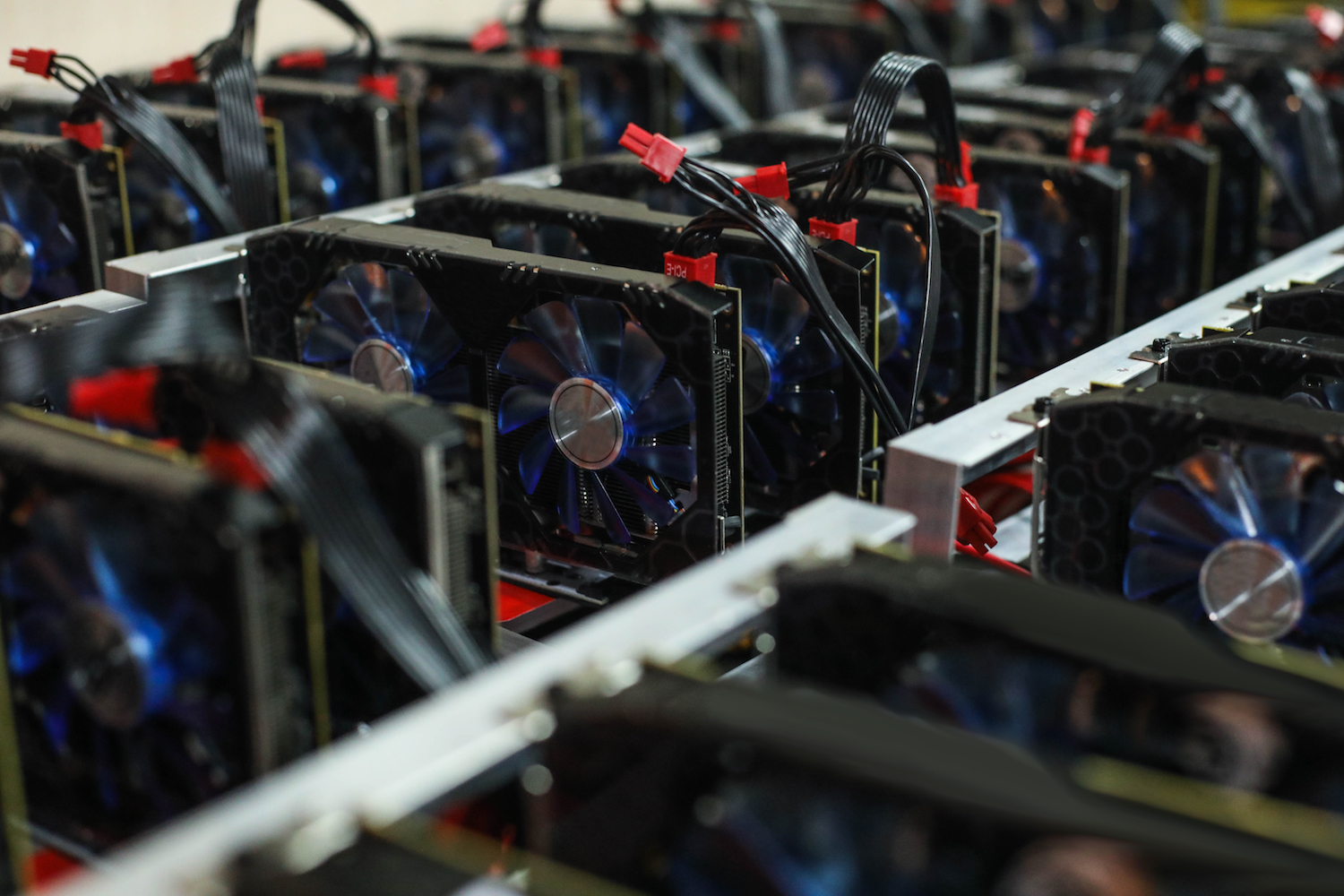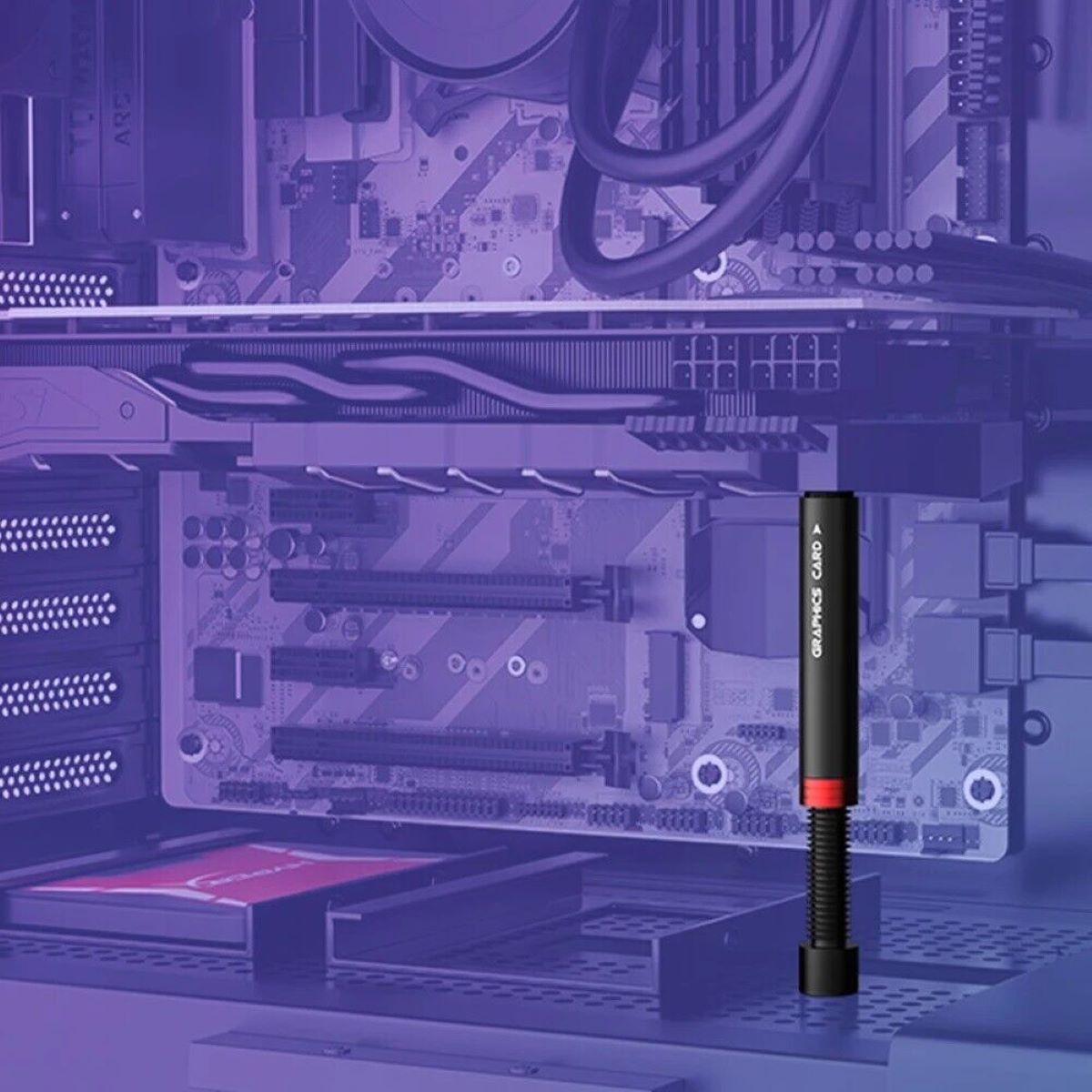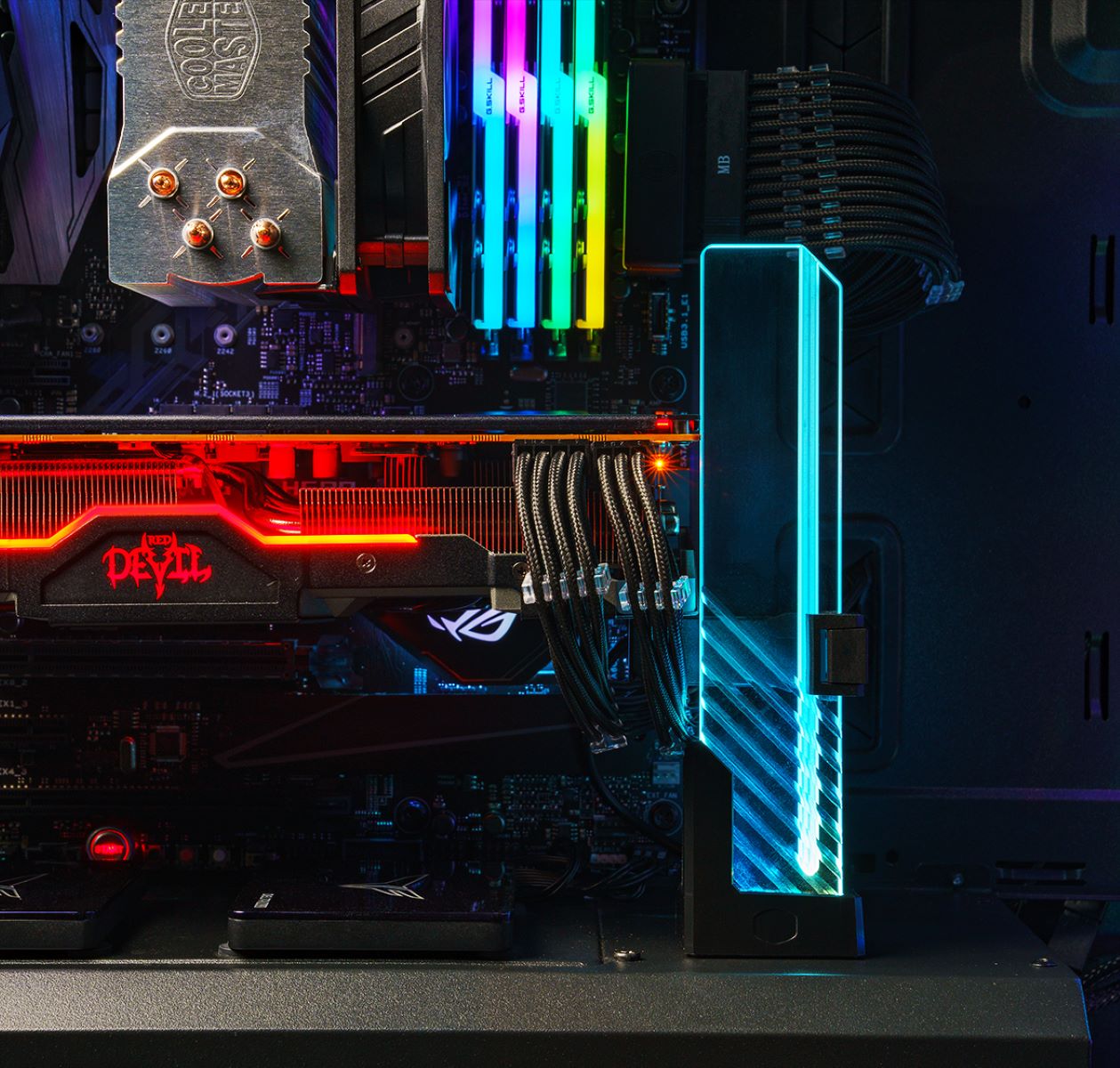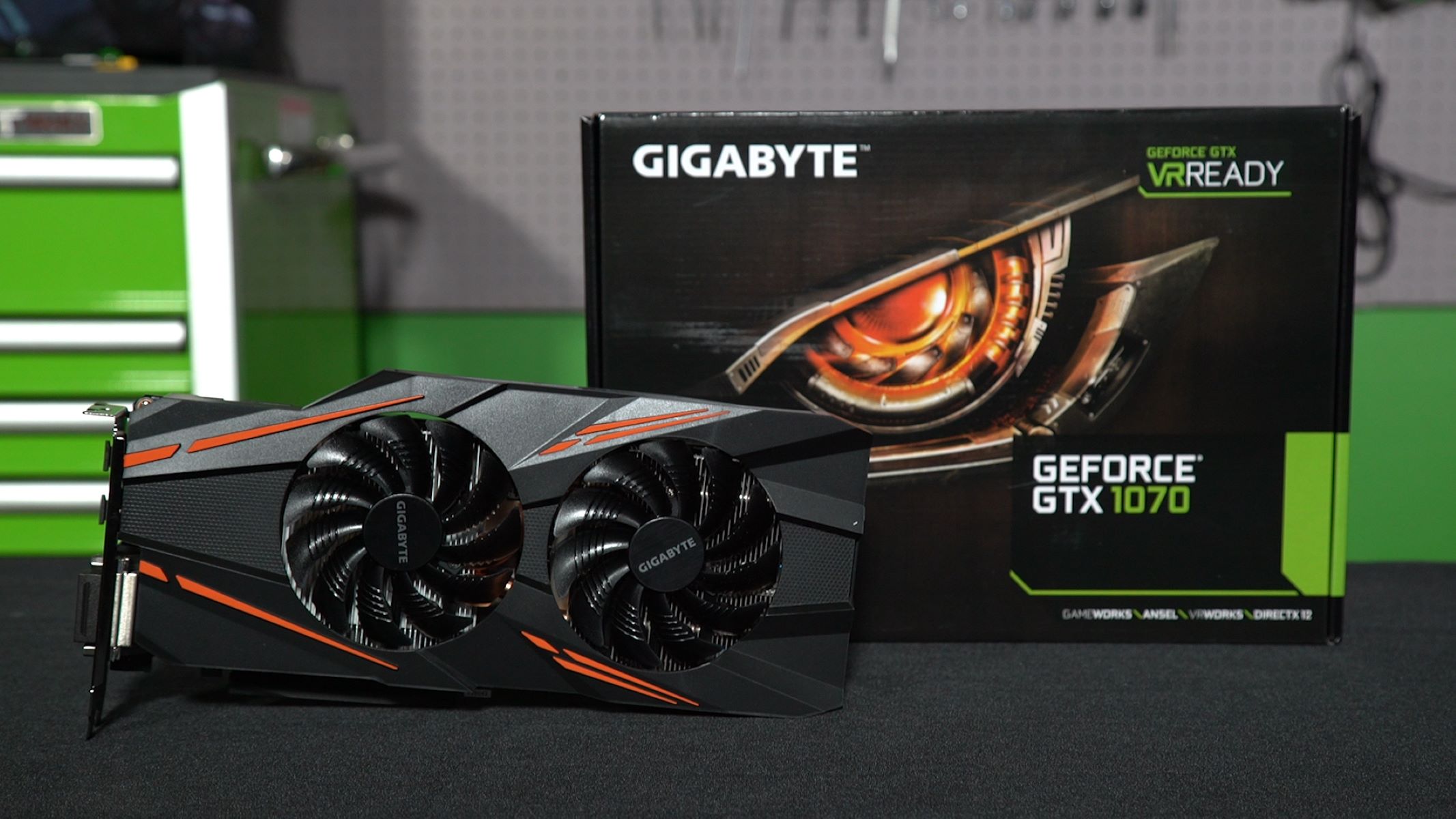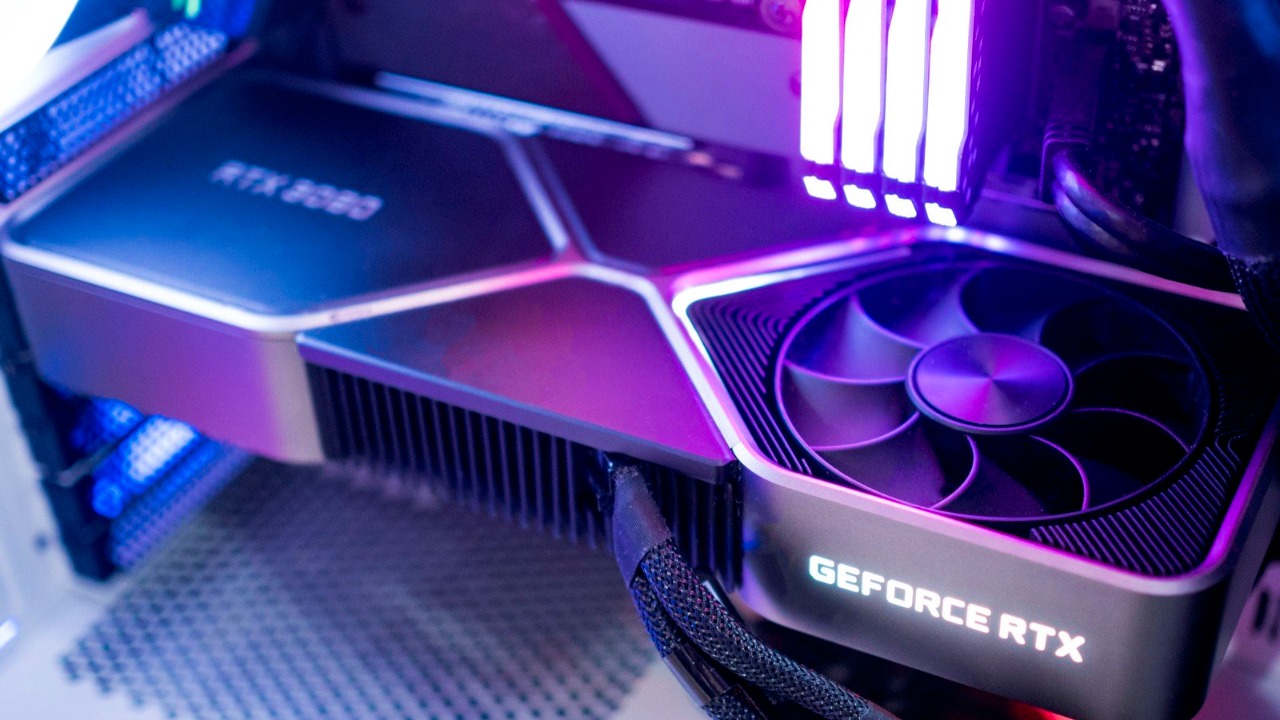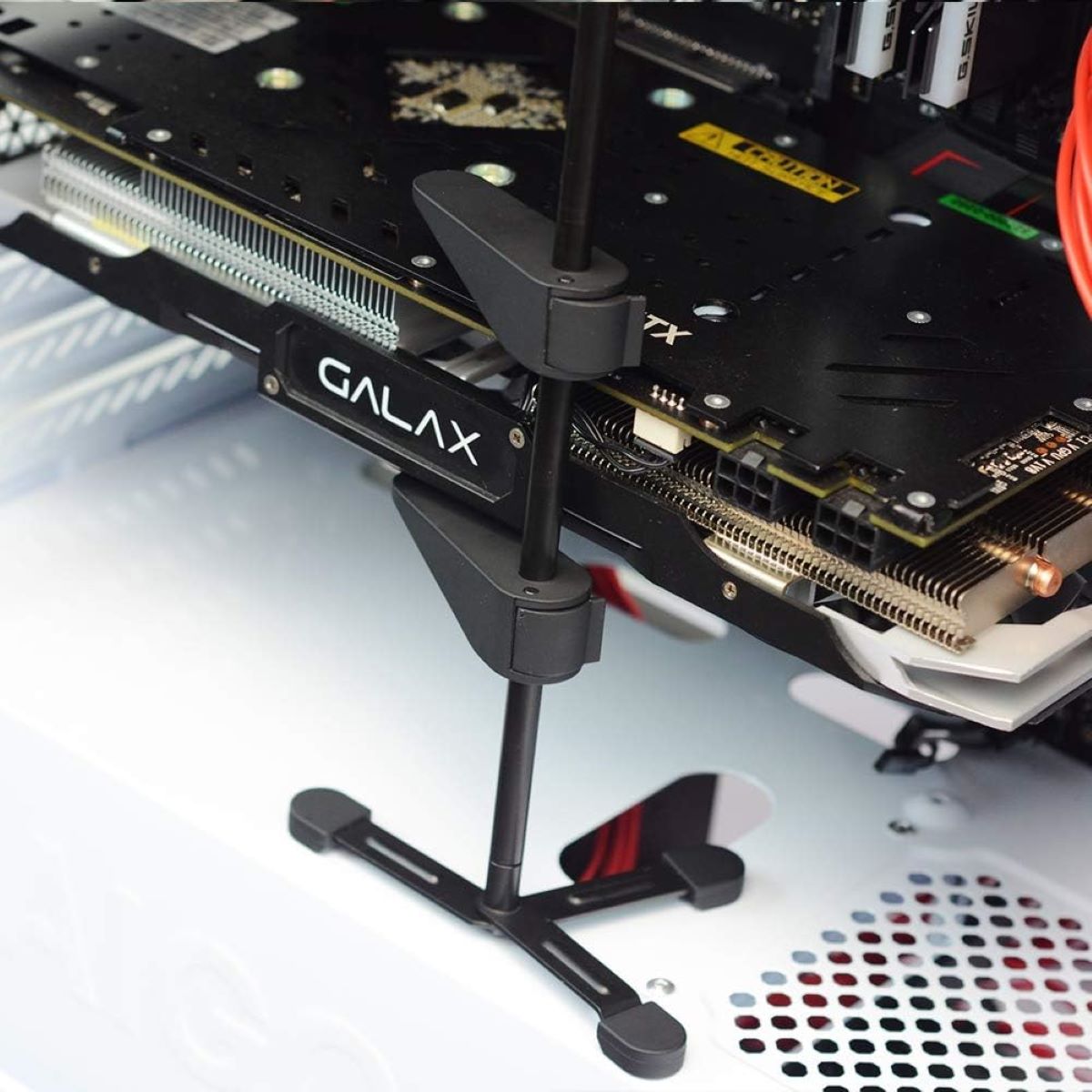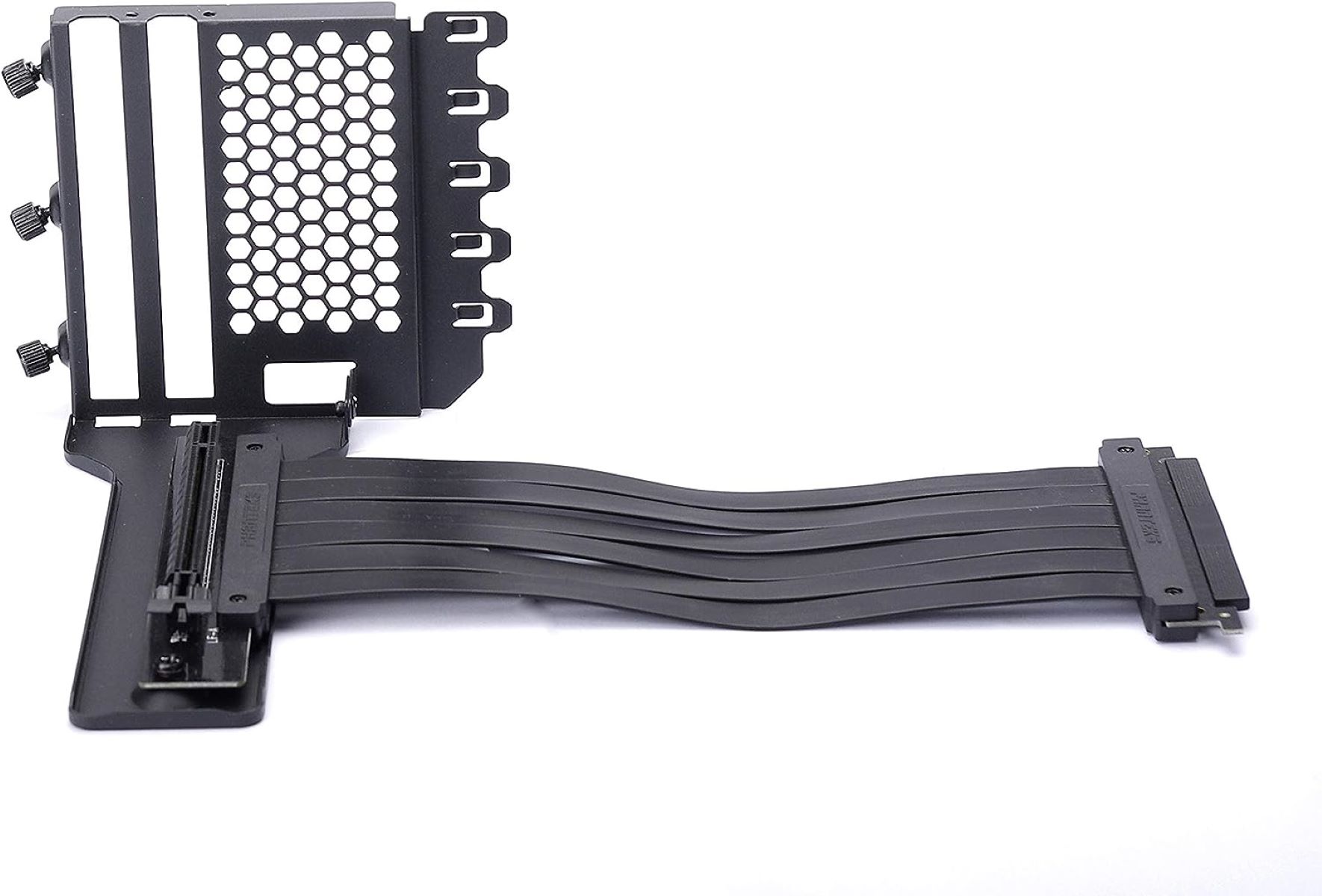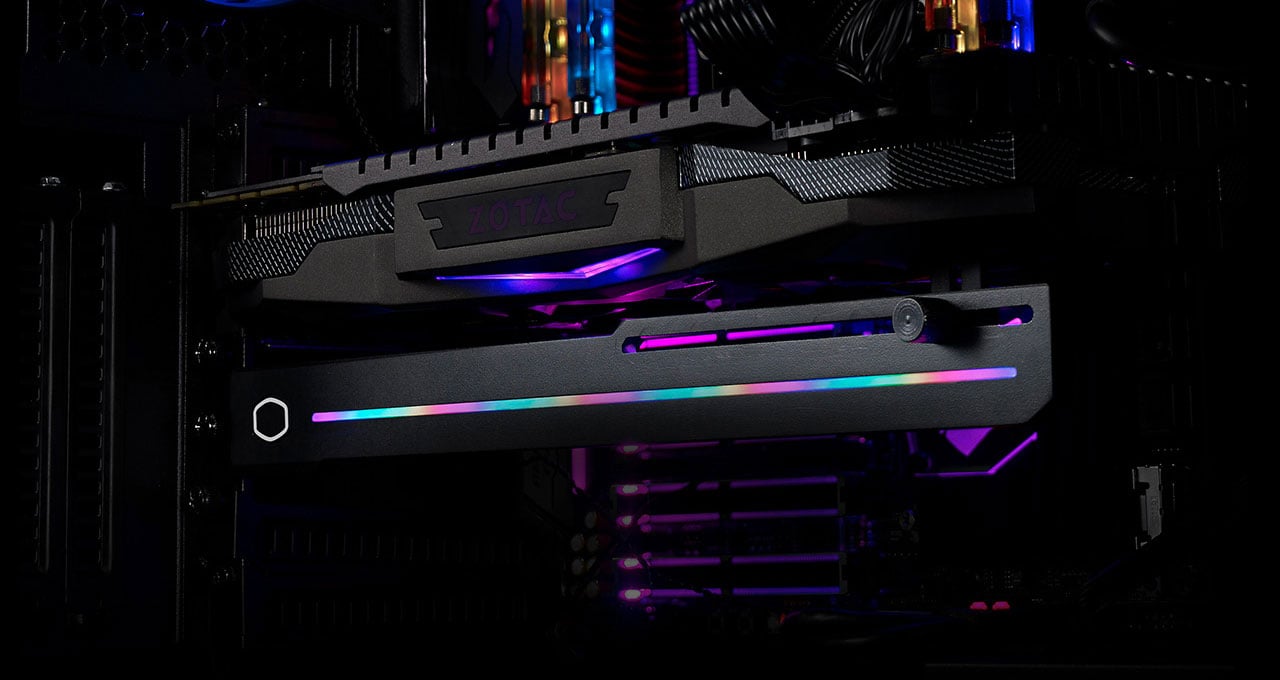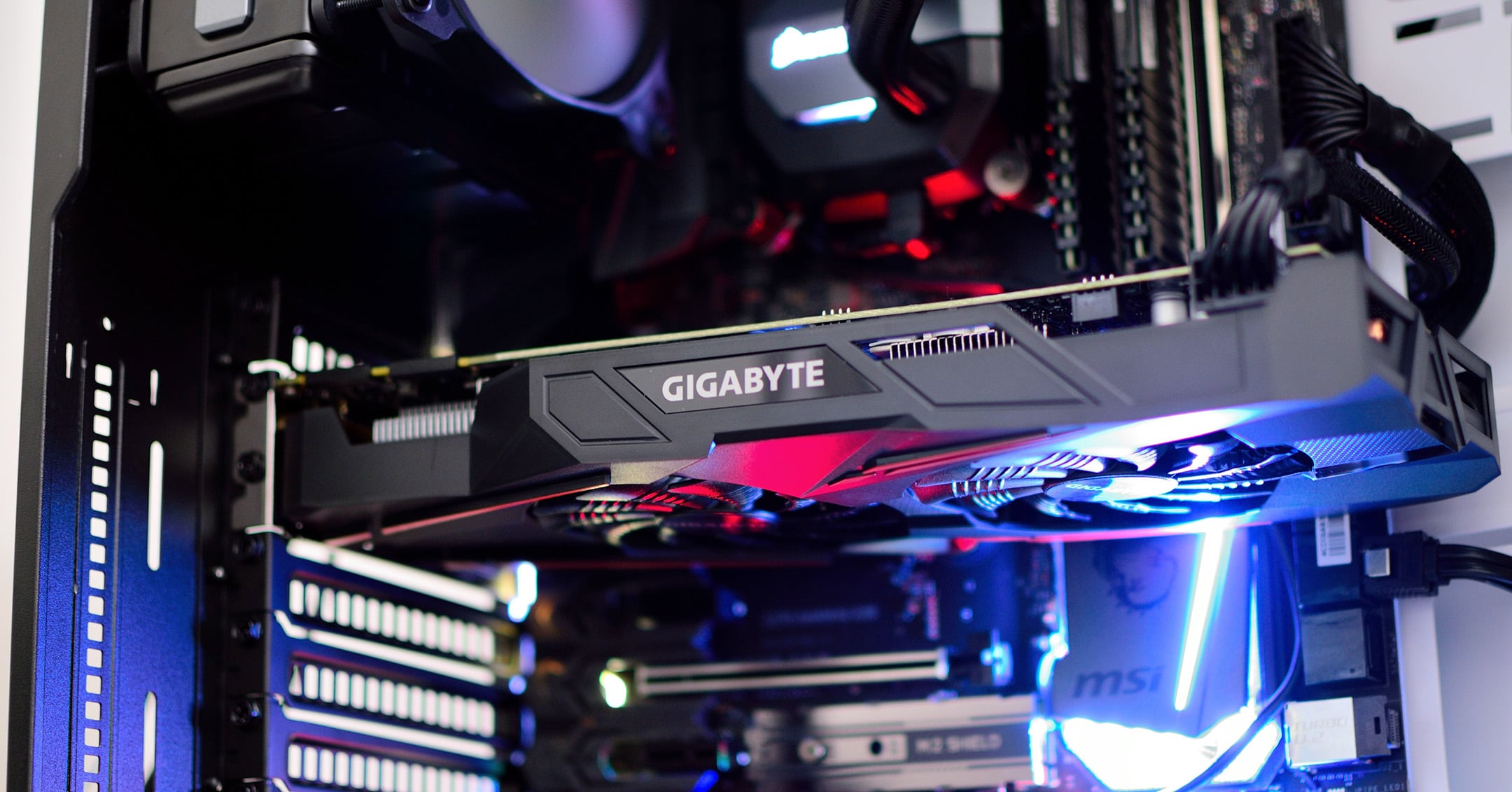Introduction
Welcome to the world of graphics cards, where visual magic happens. Graphics cards are essential components in computers that are responsible for rendering high-quality graphics, enabling smooth animations, and enhancing overall gaming and multimedia experiences. However, like any other hardware, graphics cards have a finite lifespan and may start to show signs of wear and tear over time.
Whether you are a gamer, a graphic designer, or a casual computer user, understanding the lifespan of a graphics card is crucial in managing expectations and making informed buying decisions. In this article, we will dive into the factors that affect the lifespan of a graphics card, signs that indicate your card may be failing, and ways to prolong its lifespan.
Before we delve into the details, it’s important to note that the lifespan of a graphics card can vary depending on various factors. Some cards may last for several years without any issues, while others may encounter problems within a shorter time frame. However, with proper care and maintenance, you can maximize the lifespan of your graphics card and keep it running smoothly for as long as possible.
So, if you’re curious about how long your graphics card will last or want to know when it’s time to consider an upgrade, keep reading to discover everything you need to know about the lifespan of a graphics card and how to make the most of it.
Factors That Affect the Lifespan of a Graphics Card
A graphics card is a complex electronic device that can be influenced by a variety of factors that affect its lifespan. Understanding these factors can help you take necessary precautions and make informed decisions when it comes to maintaining and upgrading your graphics card. Here are the key factors that can have an impact on the lifespan of your graphics card:
1. Usage and Workload: The primary factor that affects the lifespan of a graphics card is the extent and intensity of its usage. Graphics cards used for gaming or heavy rendering tasks tend to experience more stress and temperature fluctuations, which can accelerate the wear and tear on the card. Similarly, running resource-intensive games and applications for long durations puts a strain on the card, shortening its lifespan.
2. Temperature: Excessive heat is a major enemy of graphics cards. High temperatures can lead to thermal throttling, where the card automatically reduces its performance to prevent overheating. Prolonged exposure to high temperatures can cause damage to the internal components and significantly reduce the lifespan of the card. Proper cooling, adequate airflow in the computer case, and avoiding overclocking can help mitigate the impact of heat.
3. Quality and Build: The quality and build of a graphics card play a crucial role in determining its lifespan. Cards manufactured using high-quality components and robust designs are generally more durable and have a longer lifespan. Opting for reputable brands and models known for their reliability can often result in a graphics card that lasts longer and performs better over time.
4. Overclocking: Overclocking, which involves pushing the graphics card beyond its factory-set speed limits, can significantly impact its lifespan. While overclocking can provide a performance boost, it also increases the card’s power consumption and heat generation. This, in turn, shortens the card’s lifespan. Engaging in moderate or extreme overclocking without proper cooling and power management can lead to premature failure of the graphics card.
5. Dust and Debris: Accumulation of dust and debris on the graphics card can obstruct airflow and cause heat buildup, leading to potential damage to the card’s components. Regular cleaning of the card and ensuring a dust-free environment can help maintain optimal performance and extend its lifespan.
6. Power Quality: Inconsistent power supply, voltage spikes, or power surges can negatively impact the lifespan of a graphics card. Using a good quality power supply, installing a surge protector or uninterruptible power supply (UPS), and ensuring stable voltage can minimize the risk of power-related damage to the card.
Remember, while these factors can influence the lifespan of a graphics card, it is essential to monitor the card’s performance, look for signs of degradation, and take appropriate measures to address any issues that may arise. By understanding and managing these factors, you can help ensure a longer and healthier lifespan for your graphics card.
Proper Care and Maintenance for Your Graphics Card
Proper care and maintenance are crucial for extending the lifespan of your graphics card. By following these tips, you can ensure optimal performance and longevity for your card:
1. Keep it clean: Dust and debris can accumulate on your graphics card over time, clogging the fans and blocking airflow. Regularly clean your card using compressed air or a soft brush. Be gentle and avoid using harsh cleaning agents that could damage the delicate components.
2. Manage temperatures: High temperatures can degrade the performance and lifespan of your graphics card. Ensure that your computer case has adequate cooling with proper airflow. Consider installing additional case fans or upgrading to liquid cooling if necessary. Monitoring software can help you keep track of your card’s temperature and adjust performance settings accordingly.
3. Monitor and manage power: Ensure that your graphics card is receiving stable and clean power. Use a reliable power supply that can handle the wattage requirements of your card. Consider using a power conditioner or a UPS to protect against power surges or fluctuations that could damage your card.
4. Update drivers: Regularly update your graphics card drivers to take advantage of performance improvements and bug fixes. Graphics card manufacturers release driver updates that optimize compatibility and address known issues. Check for updates on the manufacturer’s website or use automatic driver update software.
5. Avoid overclocking: While overclocking can provide a performance boost, it can also increase the stress on your graphics card and shorten its lifespan. Unless you are experienced and have proper cooling measures in place, it is best to avoid overclocking.
6. Ensure proper installation: When installing or removing your graphics card, handle it with care and follow the manufacturer’s instructions. Improper installation can lead to damages or poor connections that can affect performance and lifespan.
7. Regularly check for signs of failure: Keep an eye out for any signs of graphics card failure. These may include artifacts (visual glitches), crashes, system freezes, or abnormal fan noises. If you notice any of these signs, it’s important to troubleshoot and address the issue promptly.
Remember, each graphics card model may have specific care and maintenance guidelines provided by the manufacturer. It’s always a good idea to consult the user manual or visit the manufacturer’s website for any specific recommendations for your card.
By implementing these care and maintenance practices, you can help ensure that your graphics card stays in optimal condition, performs at its best, and has a longer lifespan.
Signs That Your Graphics Card is Failing
The lifespan of a graphics card can vary, and eventually, even the most reliable cards can start to show signs of failure. Recognizing these signs can help you take appropriate action to prevent further damage or consider a replacement. Here are some common signs that indicate your graphics card may be failing:
1. Visual artifacts: If you notice visual glitches, distortions, or random colored pixels appearing on your screen, it could be a sign of a failing graphics card. These visual artifacts can manifest as flickering, screen tearing, or unusual patterns.
2. Frequent crashes and freezes: If your computer frequently crashes or freezes, especially during graphically demanding tasks such as gaming or rendering, it could be due to an issue with your graphics card. Sudden freezes or system lock-ups can be an indication of a failing card.
3. System instability: When your graphics card starts to fail, you may experience overall system instability. This can include random system restarts, error messages related to the graphics card, or the system failing to boot properly.
4. Abnormal fan noises: Unusual noises coming from your graphics card’s fans, such as grinding or rattling sounds, can suggest that the card is not functioning properly. The fans may be struggling to cool the card effectively or may be experiencing mechanical issues.
5. Artificially low performance: If you notice a significant drop in performance that cannot be attributed to other factors such as driver issues or software conflicts, it could be a sign of a failing graphics card. Your games or applications may run slower or struggle to render graphics properly.
6. Driver crashes: Frequent crashes or errors related to your graphics card drivers, such as the display driver crashing and recovering, can indicate a hardware issue. This can occur even after reinstalling or updating the drivers.
7. Strange or burning smells: If you smell something unusual coming from your computer, especially a burning odor, it could indicate that the graphics card is overheating or experiencing electrical issues. In such cases, it is important to shut down your system immediately and inspect the card.
If you experience any of these signs, it’s crucial to act promptly. Start by checking for any loose connections between the graphics card and the motherboard. Update your graphics card drivers to the latest version, and ensure that your system is properly cooled and ventilated. If the issues persist, it may be necessary to replace your failing graphics card.
Keep in mind that these signs can also be symptoms of other hardware or software problems. Therefore, it’s recommended to seek professional help or consult with technical support if you are unsure about the cause of the issues you are experiencing.
Regular monitoring, maintenance, and addressing problems in a timely manner are essential to extending the lifespan of your graphics card and avoiding critical failures.
Average Lifespan of Different Graphics Card Models
The lifespan of a graphics card can vary depending on the specific model and its usage patterns. Generally, higher-end graphics cards tend to have a longer lifespan compared to entry-level or mid-range cards. However, it’s important to note that these figures are estimates, and individual results may vary. Here is a general breakdown of the average lifespan for different graphics card models:
1. Entry-level graphics cards: Entry-level graphics cards, typically designed for casual gaming and multimedia tasks, may have an average lifespan of around 3 to 4 years. These cards are not intended for heavy gaming or demanding applications and may struggle to keep up with newer, more resource-intensive games over time.
2. Mid-range graphics cards: Mid-range graphics cards, which offer better performance and are suitable for gaming at medium to high settings, can have an average lifespan of around 4 to 6 years. These cards provide a good balance between performance and affordability, making them popular choices for gamers on a budget.
3. High-end graphics cards: High-end graphics cards, known for their powerful performance and capable of handling demanding games and applications, tend to have a longer lifespan. On average, high-end graphics cards can last anywhere from 5 to 7 years or even longer, depending on usage and maintenance. These cards are generally more expensive but offer the best performance and longevity.
It’s worth noting that advancements in technology and the rapid pace of innovation in the graphics card industry can affect the lifespan of these models. Newer games and software often require more powerful hardware, so while a graphics card may still be functioning after several years, it may struggle to meet the requirements of newer applications. Upgrading to a newer model may be necessary to ensure optimal performance and compatibility.
Additionally, how the graphics card is used and maintained can also impact its lifespan. Factors such as regular cleaning, proper cooling, and responsible usage (avoiding extreme overclocking and power spikes) can help extend the lifespan of a graphics card regardless of its model.
Ultimately, it’s essential to consider the specific requirements of your computing needs, budget, and desired performance when choosing a graphics card. While the average lifespan can provide a general idea, it’s important to factor in individual usage patterns, technological advancements, and your own expectations when considering the longevity of a graphics card.
How to Prolong the Lifespan of Your Graphics Card
Prolonging the lifespan of your graphics card requires proactive care and regular maintenance. By following these tips, you can optimize the performance and longevity of your graphics card:
1. Provide proper cooling: Ensure that your computer case has sufficient airflow and cooling. Keep the fans and heatsink of the graphics card clean from dust and debris. Consider installing additional case fans or upgrading to liquid cooling if needed.
2. Avoid excessive overclocking: While overclocking can provide a performance boost, it increases the stress on your graphics card. Limit overclocking to moderate levels and monitor temperatures to prevent overheating.
3. Keep your drivers up to date: Regularly update your graphics card drivers to ensure compatibility, optimize performance, and fix any known issues. Graphics card manufacturers frequently release updated drivers to enhance stability and address software-related problems.
4. Power management: Use a reliable power supply that provides stable voltage to your graphics card. Avoid power surges and fluctuations by using a surge protector or an uninterruptible power supply (UPS). Unstable power can damage the components of your card.
5. Monitor temperatures: Keep an eye on the temperature of your graphics card using monitoring software. If temperatures consistently reach high levels, consider improving cooling or reducing the workload on your card.
6. Avoid physical impacts: Handle your graphics card with care to prevent physical damage. Avoid dropping or mishandling the card during installation or removal. Securely attach the card to the motherboard using proper screws and fittings.
7. Clean your system regularly: Dust the interior of your computer case regularly to prevent a buildup of dust on the graphics card and other components. Use compressed air or a soft brush to clean the fans, heatsink, and PCB of the card.
8. Avoid extreme temperature environments: Keep your computer in an environment with stable and moderate temperatures. Extreme heat or cold can negatively affect the performance and lifespan of the graphics card.
9. Properly uninstall old drivers: When upgrading or replacing your graphics card, ensure that you properly uninstall the drivers associated with the old card. Lingering driver remnants can cause conflicts and issues with the new card.
10. Regularly check for updates: Stay informed about firmware or BIOS updates for your graphics card. These updates may provide bug fixes, performance improvements, and compatibility enhancements that can help prolong its lifespan.
By following these guidelines, you can ensure that your graphics card remains in optimal condition and performs reliably over time. However, it’s important to keep in mind that even with proper care, graphics cards may eventually reach a point where they need to be replaced to meet the demands of new applications and technologies.
Upgrading vs. Replacing Your Graphics Card
As technology advances and new graphics cards are released, you might find yourself contemplating whether to upgrade your current graphics card or replace it with a new one entirely. Here are some factors to consider when deciding between upgrading or replacing your graphics card:
1. Performance needs: Evaluate your current graphics card’s performance in relation to your computing needs. If your current card is struggling to handle the latest games or software, upgrading to a more powerful model might be the best option. However, if your card still meets your performance requirements, a simple upgrade might not be necessary.
2. Compatibility: Before upgrading your graphics card, ensure that your computer’s power supply, motherboard, and other components are compatible with the new card. Check the physical dimensions, power requirements, and connectivity options to ensure a seamless upgrade process.
3. Budget: Consider your budget when making a decision. Upgrading your graphics card can be a cost-effective option as it allows you to improve performance without investing in an entirely new system. However, if your current card is outdated and cannot keep up with modern applications, replacing it with a new, more advanced model may be a better long-term investment.
4. Technological advancements: Stay informed about the latest advancements in graphics card technology. If there has been a significant leap in technology since you purchased your current card and a newer model offers substantial improvements in performance, efficiency, or additional features, it might be worth considering a replacement.
5. Future-proofing: Consider your future needs and how long you plan to keep your system. If you anticipate using your computer for several more years, investing in a powerful graphics card might provide better future-proofing. However, if you have plans to upgrade your entire system in the near future, a smaller, temporary upgrade may suffice.
6. Warranty and support: Check the warranty status of your current card. If it’s still under warranty, you might want to explore support options or contact the manufacturer for troubleshooting before deciding to upgrade or replace.
7. Personal preference: Ultimately, personal preference plays a significant role in the decision-making process. Some enthusiasts enjoy the thrill of upgrading their hardware regularly and staying up to date with the latest technology. Others may prioritize stability and opt to keep their current card until it no longer meets their requirements.
Consider these factors along with your specific needs and preferences when deciding whether to upgrade or replace your graphics card. It’s advisable to conduct thorough research, read reviews, and seek professional advice if needed before making a final decision. Remember, upgrading or replacing your graphics card can greatly enhance your computing experience, allowing you to enjoy improved performance, enhanced visuals, and an overall smoother user experience.
Conclusion
The lifespan of a graphics card can vary depending on numerous factors, including usage patterns, maintenance, and technological advancements. Understanding these factors and taking proactive measures to care for and maintain your graphics card can help prolong its lifespan and ensure optimal performance.
We explored the factors that can affect the lifespan of a graphics card, such as usage intensity, temperature, build quality, overclocking, dust, and power quality. These factors can significantly impact the longevity of your card and should be considered when managing your graphics card.
We also discussed the importance of proper care and maintenance for your graphics card. This includes keeping the card clean, managing temperatures, updating drivers, monitoring power supply, avoiding excessive overclocking, and ensuring proper installation and handling.
Recognizing the signs of a failing graphics card is crucial in taking timely action. Visual artifacts, frequent crashes, system instability, abnormal fan noises, artificially low performance, driver crashes, and strange smells are indicators that your graphics card may be on the verge of failure.
Considering the average lifespan of different graphics card models can help manage expectations and plan for future upgrades or replacements. Entry-level cards generally last around 3 to 4 years, mid-range cards around 4 to 6 years, and high-end cards can last 5 to 7 years or longer.
When deciding between upgrading or replacing your graphics card, factors such as performance needs, compatibility, budget, technological advancements, future-proofing, warranty/support, and personal preference should be taken into account.
In conclusion, maintaining a well-functioning graphics card involves a combination of care, regular maintenance, and making educated decisions about upgrades or replacements. By following the tips and suggestions provided in this article, you can maximize the lifespan of your graphics card, ensure optimal performance, and enjoy an enhanced multimedia and gaming experience for years to come.







